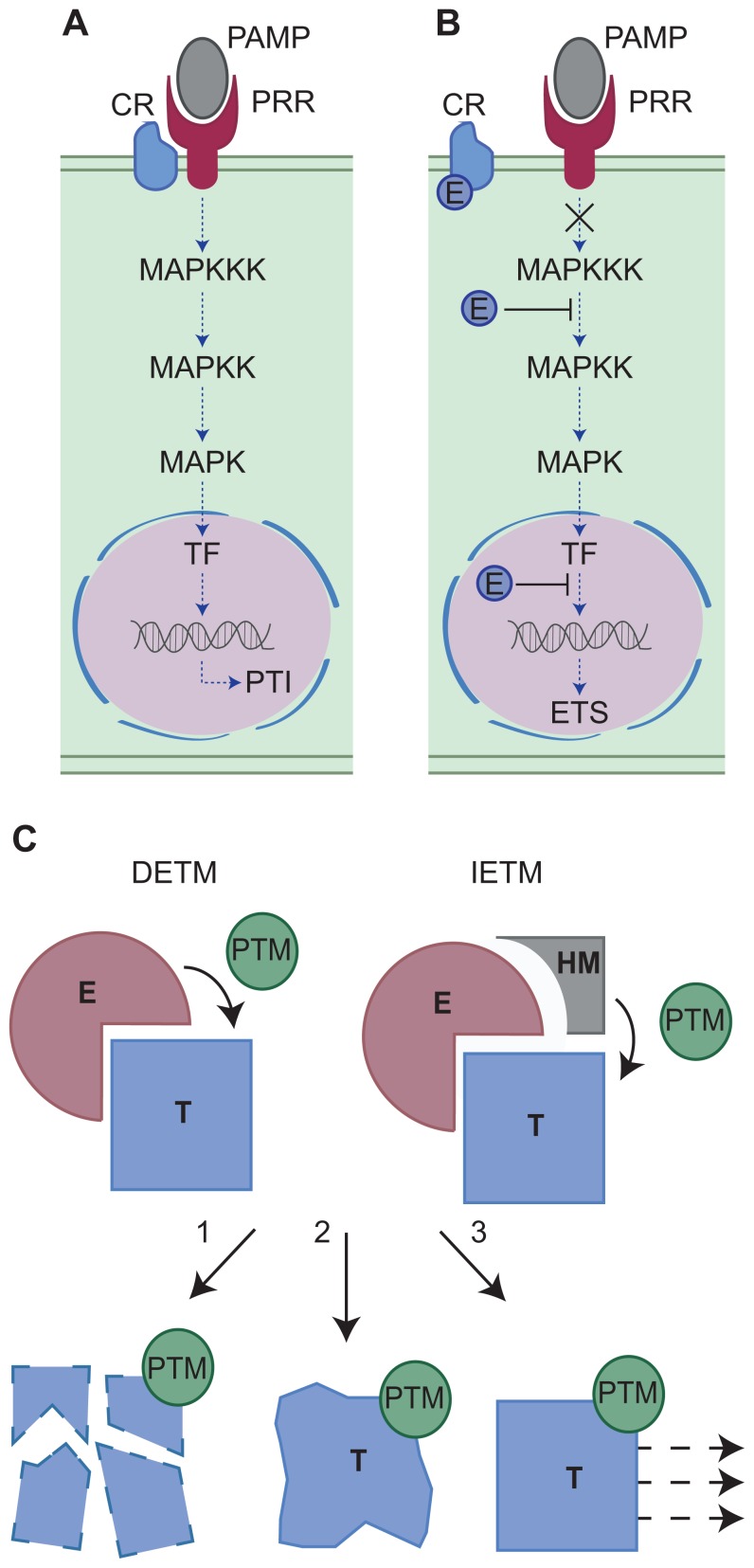FIGURE 1.
(A,B) Modulation of host defense-signaling networks by pathogen effectors. One example of effector mediated host defense modulation is the manipulation of mitogen-activated protein kinase (MAPK) phosphorylation cascades. (A) Host defenses may be activated by the perception and binding of pathogen-associated molecular patterns (PAMPs) by host pattern recognition receptors (PRRs) with the aid of a co-receptor (CR). Successful PAMP perception triggers a MAPK phosphorylation cascade resulting in transcription factor (TF) activation, defense gene expression and PAMP-triggered immunity (PTI). However, pathogen effectors (E) can manipulate this signaling pathway at a number of key steps (B) resulting in effector-triggered susceptibility (ETS). For example, the MAPK cascade can be blocked either by the effector perturbing CR-PRR activities or by the effector modifying MAPKs directly. Alternatively, nuclear targeting effectors may block defense gene induction, ultimately leading to enhanced susceptibility and the onset of disease. (C) Two models for effector-triggered post-translational modifications. In Model 1 (direct effector-triggered modification – DETM) the effector (E) binds the host target protein (T) and directly catalyzes its post-translational modification (PTM). In Model 2 (indirect effector-triggered modification – IETM) the effector binds the target protein and recruits a host machinery (HM) which catalyzes target PTM. The modified host protein may then be subject to proteasome mediated degradation (1), altered structural confirmation and activity (2), or re-localization (3).

